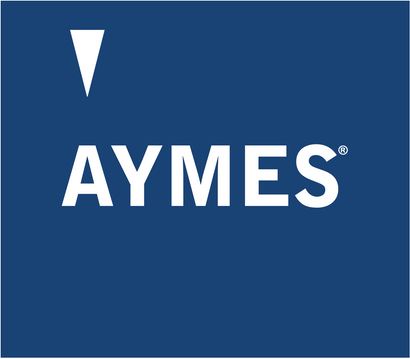Best practice guidance for dietitians on the nutritional management of Parkinson's have recently been updated¹. The resource, which was developed by Parkinson’s UK with support from the British Dietetic Association (BDA), explains the nutritional consequences of Parkinson's Disease (PD) and strategies for dietary management. This article provides a brief summary of the updated guidelines.
Background
The guidelines acknowledge that people living with PD are at risk of weight loss and malnutrition. This is due to a number of reasons such as increased energy expenditure (due to involuntary movements associated with PD), reduced oral intake secondary to symptoms, such as; swallow difficulties and/or side effects related to medication. Dietitians therefore play a key role in educating and assisting people with PD to optimise their nutritional status.
Stages of Parkinson's Disease
There are three distinct stages of PD: diagnosis and early disease, advanced disease and palliative care. We will explore the role of a dietitian in each of these stages.
1. Diagnosis and Early Disease
The updated guidelines state that newly diagnosed PD patients should have a nutritional assessment which includes weight, height and Body Mass Index (BMI). Nutrition risk screening tools such as the Malnutrition Universal Screening Tool (MUST)² or the Patients Association Nutrition Checklist should also be used, with (at least) annual monitoring thereafter.
Dietary Intervention
Newly diagnosed patients should eat a healthy, well-balanced diet whilst maintaining a healthy weight. Constipation is common in as much as 80% of PD patients. In this instance, the guidelines state that a high fibre/fluid intake should be recommended.
Weight should be monitored regularly, and steps should be taken to ensure nutritional needs are met. This may include (but is not limited to) a food first approach, vitamin supplementation, Oral Nutritional Supplements (ONS), and/or artificial nutrition support where indicated.
The guidelines highlight that medications for PD (such as levodopa) may increase the risk of micronutrient deficiencies (such as vitamin B12 and folic acid). In this instance, targeted micronutrient supplementation may be required. Vitamin D should also be supplemented in line with government recommendations for “at risk” groups (10mcg vitamin D daily).³ There is no evidence to support the use of antioxidant supplements or coenzyme Q in PD.
2. Advanced Disease
In advanced PD, dietetic assessment should consider additional factors, including:
- Unintentional weight loss
- Decreased oral intake
- Swallowing difficulties
- Poor dentition, dry mouth
- Changes to taste/smell
- Increased frequency of dyskinesias (abnormal involuntary movements)
- Early satiety
- Gastrointestinal problems: nausea, vomiting, gastroparesis, reflux, diarrhoea, constipation
- Side effects of medication
- Physical difficulties with eating
- Bone health
- Weight-gain after deep brain stimulator (DBS) insertion
- Mental health problems, including impulse control disorders (e.g. binge eating)
- Orthostatic hypotension – characterised by a sudden fall in blood pressure that occurs when a person assumes a standing position
Dietetic monitoring should occur every four to six weeks; or every three months if stable.
Dietary Intervention
ONS and Enteral Tube Feeding
The guidelines recommend that a food first approach (e.g., food fortification, high energy/protein advice, eating little and often etc.) should be explored first. ONS should be provided when food first interventions are insufficient for meeting estimated nutritional requirements. ONS prescriptions should be reviewed every three months.
Nearly all (95%) PD patients experience swallowing difficulties at some stage, which increases a patient’s risk of malnutrition. Texture-modified diets may be indicated for patients with swallowing problems and should be assessed for nutritional adequacy. If required, short or long-term enteral tube feeding may be given alongside oral intake, or as the main source of nutrition.
Bone Health
The guidelines reiterate that PD may result in low bone mineral density and increased risk of osteoporosis (due to reduced mobility, decreased muscle strength, low body weight, and vitamin deficiencies). Calcium supplements should be considered in line with osteoporosis management guidelines. Vitamin D supplementation is also recommended, as mentioned above.
Orthostatic Hypotension (OH)
People with PD may experience OH and postprandial hypotension, resulting in blurred vision and dizziness after meals. These symptoms can occur any time from ingestion to 90 minutes post meal. Dietary advice for people with OH includes:
- Small, frequent meals
- Reduce carbohydrate intake, especially simple sugars
- Increase intake of salt and fluid
- Avoid alcohol
Protein Manipulation
The guidelines state that protein can delay gastric emptying, competing with the absorption of the PD medication levodopa. However, PD patients affected by this should be advised to avoid a reduction in their total daily protein consumption. Instead, a protein redistribution diet should be recommended, in which most of the protein is eaten in the final main meal of the day. There is no evidence to support low protein diets or creatine supplements for PD.
In the case of continuous enteral tube feeding (low-infusion-rate), it is advisable to concentrate feeding during the night hours if possible. In tube-fed patients treated with oral formulations of levodopa-containing medications, feeds should be paused for at least 1 h before and 30-40 min after drug administration.
3. Palliative Care
The aim of palliative care is to maximise a patient’s quality of life through management of symptoms, relief of pain and management of any other distressing aspects of advanced PD. In PD, the palliative care stage may last a long time. In the latter stages artificial nutrition support may be reduced or withdrawn, particularly if it causes discomfort or distress. Oral nutrition should be offered, but not forced. If a patient chooses to maintain an oral intake where it is unsafe, they should be fully informed of potential consequences and supported in their choice
Conclusion
The guidelines conclude by stating that the risk of malnutrition increases as the PD progresses. Newly diagnosed patients should be advised to eat a healthy, well-balanced diet whilst maintaining a healthy weight. As the condition progresses, and risk of malnutrition increases, food-first strategies should be employed. If these are insufficient, ONS should be provided. If required, tube feeding may be given alongside oral intake, or as the main source of nutrition. Dietitians have the knowledge and skills to support people with PD and minimise their nutritional risk at all stages of the condition.
- ◄References:
-
- Robinson K., Picton R. Best practice guidance for dietitians on the nutritional management of Parkinson’s. British Dietetic Association (The Association of UK Dietitians) and Parkinson's UK. 2015; updated 2021.
- Elia M. THE MUST REPORT Nutritional screening of adults: a multidisciplinary responsibility Executive summary Section A: Screening for malnutrition: a multidisciplinary responsibility. MAG, a Standing Comm BAPEN. 2003;
- Public Health England. Vitamin D and Health 2016. Sci Advis Comm Nutr [Internet].2016;56–116. Available from: https://www.gov.uk/government/publications/sacn-vitamin-d-and-health-report


